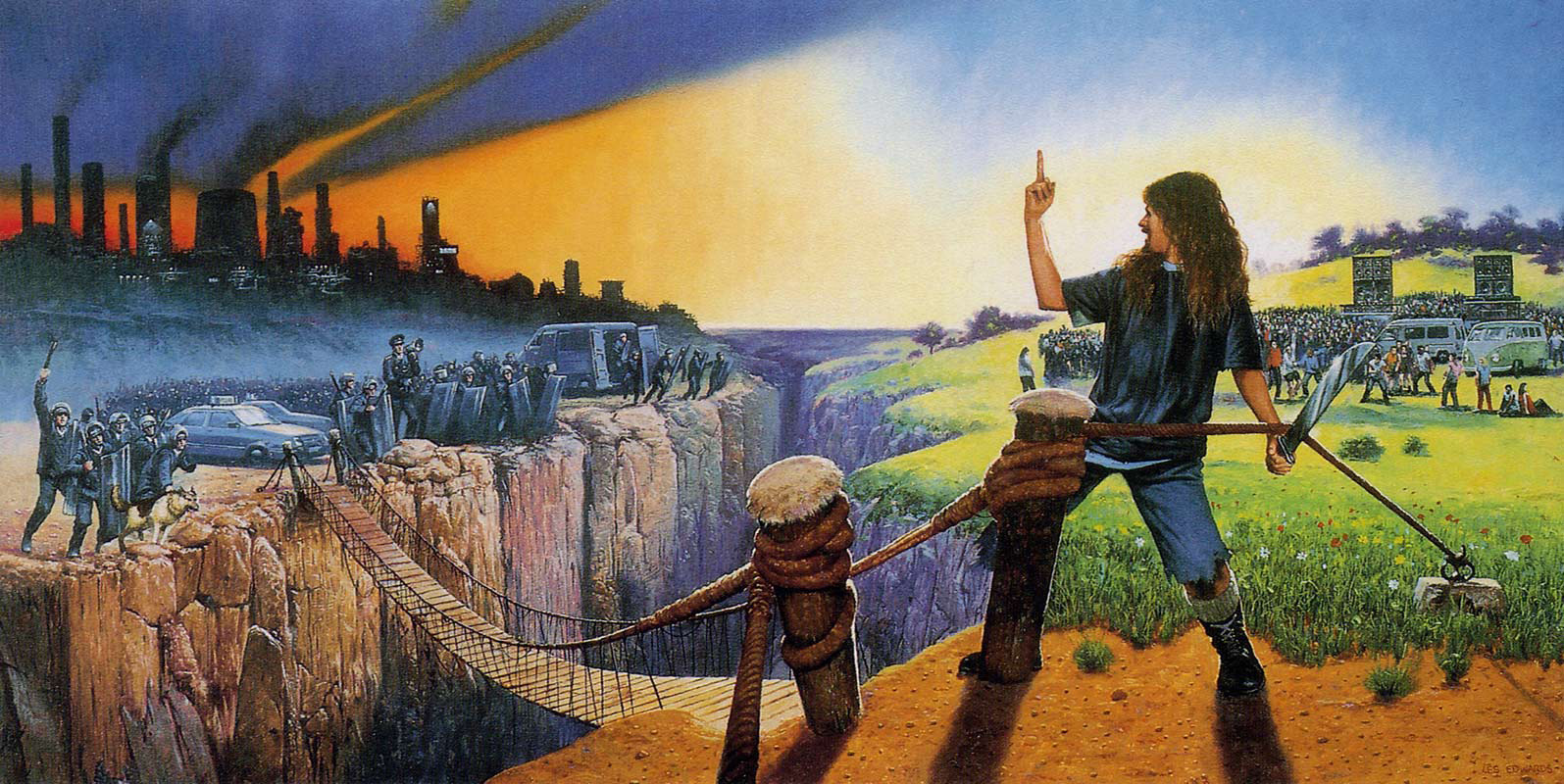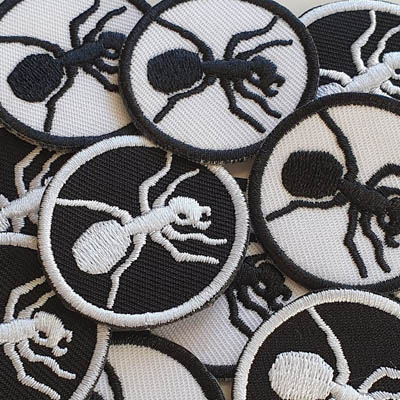Articles
The Prodigy related articles from magazines.
Dazed
A soundtrack for the Jilted Generation

From rave to Major: how the Prodigy's second landmark record defined the summer of 1994
Nineteen ninety-four. John Major’s Tory government is engaged in a shambolic parody of the party’s recent history. First there was Black Wednesday; then the rebellion over Europe; cash for questions; “sleaze” and record unemployment. Elsewhere, Damian Hirst is putting dead sheep in formaldehyde. A fine symbol of the times: static, complacent. To quote James Joyce, “a cracked looking glass for servants”. July momentarily shrugs off this malaise. A twenty-three-year-old from Braintree, Essex called Liam Howlett releases an album called Music For The Jilted Generation with his band, the Prodigy.
A classically trained pianist and former-hip-hop DJ, Howlett has turned his back on the ecstasy-inspired dance sounds that characterised his band’s 1992 debut, Experience, in favour of the dark, mechanical strains emanating from Berlin’s techno scene through labels like Tresor. Unlike the charts filled with pop house acts there’s are no funky baselines here, just frenetic beats, klaxons, and a pervasive atmosphere of doom. Unexpectedly, the nation warms to it, and the album goes straight to number one. How did this ever happen?
Clues are scarce and obvious symbols are misleading. In an interview with the NME from October 1994, Howlett denied the resonance the album title had with his disenfranchised cohorts and downplayed the politics of single, ‘Their Law’ – a track about the Criminal Justice and Public Order Act, the law that killed the free party scene.
“It was a friend who came up the title,” he said. “I had something like 'Music for the Cool Young Juvenile'. We were [even] going to call it 'Music for Joy Riders.’ We don't read anything into our music. So when someone says to us, 'Are you a political band?' I mean, we're not. OK we drop 'Their Law' because the Criminal Justice Bill is something we feel strong about. But dance music is just about the buzz. It's not about being depressed about politics.”
Major might have sounded the death knell for rave with his bill, but Howlett was tiring of it anyway. ‘‘I’d become bored, it was just so different to what it had been four years earlier,” he told me in our recent interview.
In truth, rave had lost momentum too. Beginning in the late 1980s, it started as an offshoot of acid house, aping the countercultural ethics of the 1960s with mass impromptu “happenings” in warehouses and fields rather than licensed clubs. The years 1988 and 1989 were affectionately known as “the second summer of love”, and it even partially inspired Beatnik-esque theoretical literature such as 1991’s The Temporary Autonomous Zone by the American anarchist, Hakim Bey.
Major might have sounded the death knell for rave, but Howlett was tiring of it anyway. ‘‘I’d become bored, it was just so different to what it had been four years earlier,” he told me in our recent interview.
In it, Bey argued that by suspending the normal state of relations, these non-hierarchical free parties represented a fundamental challenge to the status quo, and that their impermanence was their revolutionary strength since they refused to impose any structural restrictions on individuals. Of course, the reality with regards to rave was different. Rather than being run by radical autonomists, these parties were promoted by an increasingly small number of entrepreneurs such as Fantazia’s James Perkins, who became one of rave’s first millionaires.
By 1994, the scene had therefore strayed a long way from its idealistic roots. Elsewhere, the music started to divide on aesthetic lines too, with its signature sound of hardcore breakbeat separating into the dark, bass-laden noise of jungle on the one hand, and the crisp, analogue formula of house and techno on the other; a schism so deep that it remained unchanged until dubstep arguably reunited them in the early 2000s.
Nonetheless, dance culture was also turning against the Prodigy, too. Back in August 1992, Mixmag ran a feature arguing the group’s seminal anthem, “Charly Says” had finished rave off by making it mainstream. Enraged, Howlett sought his revenge by torching a copy of the offending issue at the end of the video to “Fire”. Arguably, this was a brave move for such a relatively new band at a time when print media was still powerful. Despite this, such sentiments only deepened their imposed exile from the scene that spawned them. They were out of the club.
A month later, however, Howlett was back for one last job. After the fallout of this quarrel, he’d been inspired to prove his detractors wrong by writing straight-up underground hit, ‘One Love’; the first from Music. Released as two singles, its conventional rave sound of sampled breakbeats, acid basslines and tribal choruses topped the white label charts and settled the score once and for all. As a stand-alone document from the period, it was nothing exceptional, and certainly gave no hint as to the band’s new direction. But as a gesture, its mimicry of rave’s formula bordered on satirical pastiche, and marked their departure from the movement rather than their return. No love lost, etc.
Music, on the contrary, was anything but an ironic statement. At seventy-eight-minutes long, featuring 13-tracks – four of which were hit singles – plus an ambient “narcotics suite”, it was a white whale of an album for a band from any background, let alone a banished dance act. The comparison to Moby Dick rings true. In 1947 the American poet Charles Olsen wrote a study of Herman Melville’s classic entitled, Call Me Ishmael, in which he contended that Moby Dick was not just one novel but two; one about Ahab’s pursuit of the whale, the other concerned with the narrator, Ishmael’s poetic meditations on whaling.
In much the same way, on Music, Howlett weaves two competing impulses to similar effect. First, there are the four singles, “One Love”, “No Good (Start the Dance)”, “Voodoo People” and “Poison”, which act as material studies on the music business. Much like “One Love”, “No Good” also has satirical urges, featuring a mock Eurodance vocal and a video in which dancer Keith Flint attends a warehouse rave and goes mad.
“Voodoo People” follows the same route. Using a guitar hook borrowed from Nirvana’s “Very Ape”, alongside a pumping rhythm, it posits dance music’s acolytes (“Voodoo, woodoo, what don’t dare do people”) as mystical practitioners, capable of transcending genre limitations imposed by shallow marketeers. Finally, there’s “Poison”, a half speed drum n bass track, spoofing jungle’s increasingly undanceable BPMs. “You’ve got the poison, I’ve got the remedy,” sings MC Maxim Reality, implicitly referencing the group’s stance.
Next, there’s the hunt narrative, created through tracks focused on movement such as “Break & Enter”, “Full Throttle”, “Speedway (Theme from Fastlane)”, and “The Heat (The Energy)”. Mostly cinematic, hardcore numbers that peak like Giorgio Morodor’s 1977 seminal From Here To Eternity, they climax in the inertia following the completion of the chase in the groggy, drugged-out weirdness of “3 Kilos”, “Skylined” and “Claustrophobic Sting” which form the album’s concluding “narcotics suite”.
When Howlett says the record wasn’t political despite the obvious provocation of its content and title, we should take him at his word; in 1994, politics in the conventional sense must have truly seemed redundant.
Much like Ahab’s search for Moby Dick, these tracks, seemingly about dance music’s ceaseless search for greater and greater highs, express the nullity of attainment in such pursuits; while Ishmael is the only one to survive Ahab’s violent obsession, the Prodigy were one of the few acts to walk away from the rave scene unscathed. In order for their to be an ending in Moby Dick, there must be a narrative beyond Ahab’s revenge; and in order for Howlett to make Music he had to have an awareness of a future beyond the scene he started in, hence the content of his singles which make the album a coherent statement rather than a free flowing mass.
[Above] The Bunker in 1992, one of the Berlin techno clubs that sprang up after the fall of the Wall and profoundly influenced Music For The Jilted Generation
Moreover, the overarching sentiment of Music expresses the frustrations of the period with unflinching detail. Not only had the idealism driving the free party scene faded, so too had the possibility of egalitarian politics. The Soviet Union had self-combusted in 1991, neoliberals were trumpeting the triumph of capitalism, and the end of Tory-rule was nowhere insight. Therefore, when Howlett says the record wasn’t political despite the obvious provocation of its content and title, we should take him at his word; in 1994, politics in the conventional sense must have truly seemed redundant.
Nevertheless, the dark, aggressive tone of this album symbolises the despair and ennui of living in a world where the notion of emancipatory social organisation is impossible. So too does the cover. Often compared to “The Scream” by Edvard Munch, it in fact has greater similarity to the self-portraits of German sculptor Franz Xaver Messerschmidt during the period of his madness in the late 18th century. Carved from black, metallic marble, these busts show Messerschmidt with his eyes closed or blank in various states of psychological excitement, introspection and anguish, his face often caught in an expression of unending horror; a horror that the for the Prodigy was the future transformed into a terminal present after the abandonment of any conceivable utopian ambition; a horror that nonetheless bore this magnificent album.
Categories
- Articles front page 85
- Australian articles 21
- Austrian articles 3
- Canadian articles 11
- Chinese articles 1
- Czech articles 3
- Danish articles 5
- English articles 269
- Finnish articles 25
- French articles 3
- German articles 22
- Greek articles 2
- Hungarian articles 5
- Icelandic articles 11
- Indian articles 4
- Irish articles 10
- Israil articles 1
- Japanese articles 27
- New Zealand articles 5
- Norwegian articles 11
- Polish articles 4
- Russian articles 17
- Scottish articles 8
- Serbian articles 1
- Singapore articles 1
- South African articles 4
- Spanish articles 8
- Swedish articles 4
- Turkish articles 1
- UAE articles 1
- US articles 78

Trending
31 Dec 2011 Sabotage Times
The Prodigy Interviewed: “No more snorting cheap speed and banging pills up my arse”
06 Sep 2019 Music Business Worldwide
Peermusic UK signs the Prodigy’s Maxim Reality to exclusive global publishing deal
02 Nov 2017 South China Morning Post
Liam Howlett of The Prodigy on ‘fake controversy’, the band’s fired-up frontman Flint and new ‘old’ album ahead of Clockenflap
01 Aug 1992 Mix Mag
Did Charly Kill Rave?
30 Jul 2019 MusicTech magazine
Prodigy engineer/co-producer Neil Mclellan remembers the Jilted Generation sessions
The Prodigy 34 pcs sticker set
Big set of The Prodigy stickers. 17 different designs (2 of each) and total of 30 stickers. Sticker sizes vary from 9 cm to 3,5 cm. Order here >
